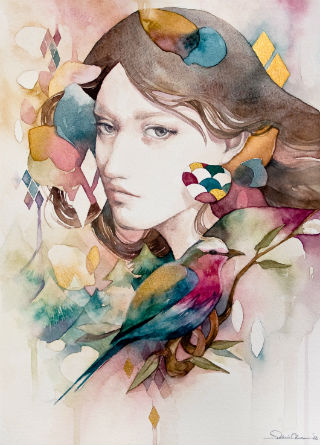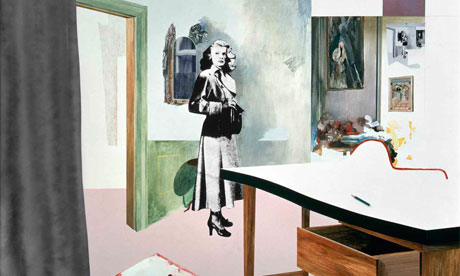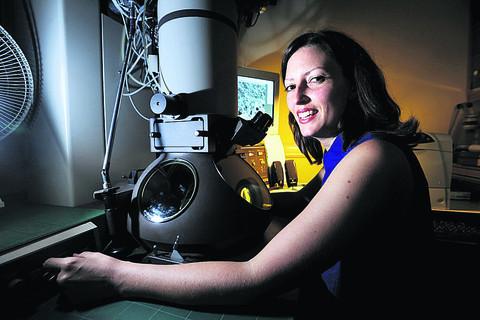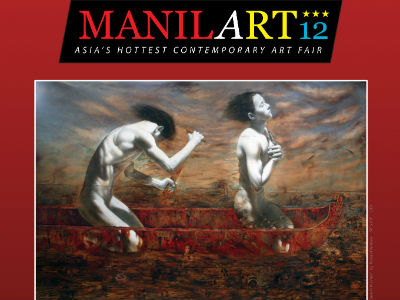ManilART 2012 runs until Oct. 6 at the SMX Convention Center in Pasay City.
As some people like to say, art is everywhere. This is especially
true at festivals like ManilART 2012, which promises to be a one-stop
showcase of the latest in the Philippine contemporary visual arts scene.
Despite the perception that art is expensive, organizers say the event
can be exciting not just for seasoned collectors and art aficionados,
but even for students on allowance. The sheer size of the event is
overwhelming: 46 galleries, over 400 artists, and 1,400 works of art.
Organizers said there will be something for everyone, from affordable
pieces from young artists, to auction-worthy pieces from internationally
recognized names.
National Commission for
Culture and the Arts (NCCA) Committee on Art Galleries head Amy Loste
said one of ManilART's objectives is to dispel the notion that art is
only for those who are already established. "In fact, if you can buy a
Starbucks coffee a day, you can buy art. Art should really be for
everyone, especially the young. Kasi diyan yung fresh blood na
tinatawag. Diyan nakukuha yung inspiration na tuloy-tuloy pinayayaman
yung visual arts," she said in a press conference on September 26.
Even for those with no intention of buying anything, the event offers
activities such as an art workshop and a walking tour. Visitors may also
explore the fair and simply enjoy looking at the various exhibits.
According to Galleria Duemila owner Silvana Diaz, what's important is
cultural preparation.
"The most important is
that you read, you learn, you see and your eyes get used to a certain
aesthetic... you start from the ground," she said during the press
conference, in a discussion of how art can be for everyone, despite
certain pieces costing hundreds of thousands.

Self-taught visual artist Valeria Chua is among over 400 artists whose work will be featured in ManilART 2012
Aurora Representative Sonny Angara, a supporter of the event, said art
appreciation is not an elite endeavor, but ownership is another thing.
"I don't believe that art is an elite activity. Enjoyment of art—you can
read about it, you can buy pictures for very affordable prices, you can
go to museums, mura lang po yun," said Angara, who began buying art as a
college student.
According to Angara, art fairs
in other countries show very few artists who are homegrown, but at
ManilART, "Ninety-nine percent of what we show is produced locally.”
"It's truly heartening that there should be a small but active minority
of young and old people who are still aggressively promoting the idea
of the originality of Filipino artists, and the uniqueness of Filipino
art. I hope this goes on on a larger and larger scale," said National
Artist for Architecture Ildefonso P. Santos at the press conference.
Apart from allowing visitors to purchase artworks on-site, ManilART
2012 seeks to expose Filipinos to local artists and their work, which
renowned sculptor Ramon Orlina said is a cut above the rest.
"We are quite ahead. Hindi naman sa yabang, because as you know si
Ronald Ventura, he is one of the highest paid ngayon sa auction. And
hindi madaling tumaas ang pagpresyo mo sa auction because sa auction ang
mga buyers, international," Orlina said during the press conference.
Ventura is this year's featured artist, with his 2001 painting Crack in
the Hull as the banner piece. Loste explained that they chose Ventura’s
piece, a modern reinterpretation of the Manunggul Jar, because it
symbolizes bridging the old and the new. "Sa art naman laging, we have
to dig from our very rich past, and translate it to the contemporary
aesthetic, that is our bridge to the future," she said.
During the fair, The Mendez Big and Small art gallery will feature
recent works from Ventura along with thirty other young figurative
artists. It was in the late 1990s that Ventura got his first big break
at Mendez Big and Small, which "encourages and displays every daring
concept and contemporary challenge created by the mind of the young
artist, and is the home of every artist who believes that freedom in art
should not be merely stated, but must be practiced and presented to
perfection," according to a press release.
Angara shared that when he was a college student, he was able to buy a piece by Ronald Ventura for 5,000 pesos. Today, Ventura holds the auction record
for contemporary Southeast Asian art, having sold one of his large
graphite, acrylic and oil on canvas works, “Grayground,” for HK$8.42
million, or US$1.1 million, at Sotheby’s Hong Kong.
“These are the kinds of young Filipino visual artists that we can
really be proud of, and the reason we initiated Manila Art in the first
place is because we want to tell them, ‘You patronize Filipino art
abroad, why not here in our home front?’” said Loste.
For those who wish to buy art, Diaz warns that it is not a question of
appreciation and depreciation. "There are great artists who
unfortunately because they are ahead of their time, they will not even
be appreciated in our generation. Van Gogh for example, not even his
brother who was a dealer was able to sell his work," she said.
For Diaz, buying art is about what pleases you. "Buy because you love
it. if you buy for an investment it's like you play with the stock
market. But art gives a satisfaction, gives a pleasure, gives happiness
that no money can buy," she said. — BM, GMA News
ManilART
2012 opens with an invitation-only Gala Night on October 2, and will
have its regular run from October 3 to 6, 10 a.m. to 7 p.m. at the SMX
Convention Center in Pasay City. Tickets are P200 for adults, P150 for
students. For more information, visit the website at http://www.manilart.com/



 A Metropolitan approach … detail of painting by Richard Hamilton. Photograph: © Richard
A Metropolitan approach … detail of painting by Richard Hamilton. Photograph: © Richard 







